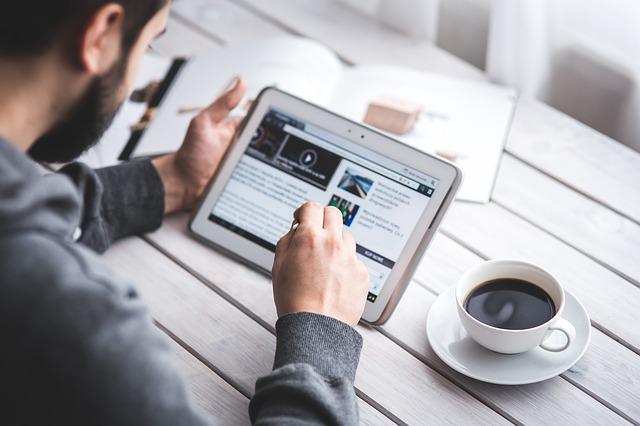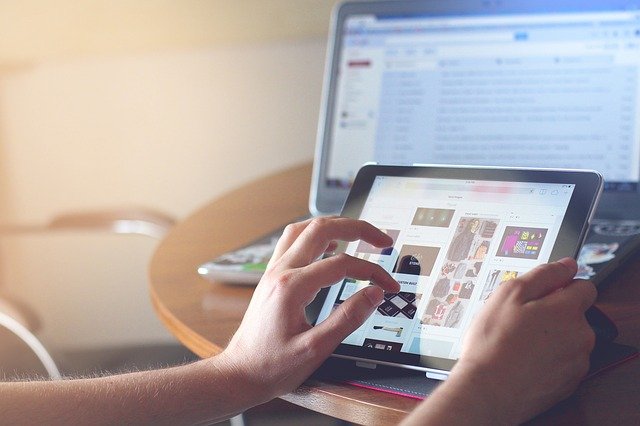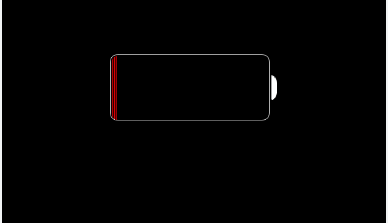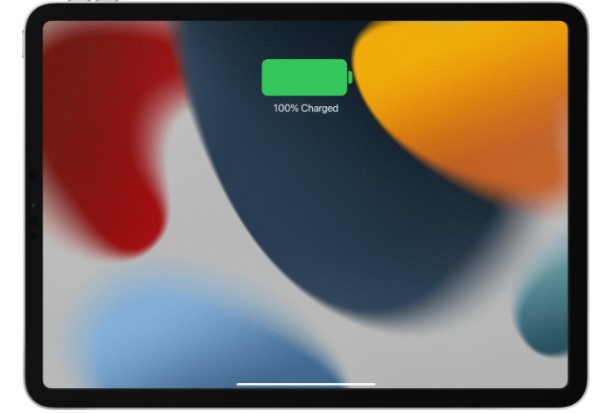What separates an iPad from a tablet, first and foremost?
iPad is Apple’s version of a tablet. While the iPad uses Apple’s iOS, the majority of tablets use Google’s Android operating system. You won’t have any trouble viewing Flash-based websites, Flash games, or watching Flash videos because tablets, unlike iPads, can use common software for playing online videos.
On the other hand, an iPad does not allow simultaneous interaction with multiple apps.
Tablets are very adaptable because you can use one app while another runs in the background. Additionally, even though iPads have more features than Android tablets, that doesn’t necessarily mean they are the best option since it depends on which features you actually need.
iPads have a large number of apps whilst the number of compatible apps is quite small for Android tablets.
Please continue reading for more information…
Table of Contents
What Is An iPad?
The name of Apple’s line of portable computers is the iPad, and everyone has heard of the Apple brand. All iPads run on Apple’s own operating system, called iOS. In essence, an iPad is just Apple’s take on a tablet.
iPads and Despite their many similarities, Android tablets also differ significantly from one another. We’ve compiled a list of the main distinctions below.
What Is A Tablet PC?
A tablet PC is a mobile computer with a touch-screen display and internet access. This means that in order to utilize a tablet to its full potential, you really need internet access.
Tablet PCs are designed to be thin and light and are stuffed with downloadable apps. They are typically smaller than a notebook computer but larger than a smartphone.
Tablets operate by touching the screen rather than a keyboard, but some models allow you to attach a physical keyboard if you’d rather.
A keyboard, however, is not included with tablets, so you will need to buy one separately.
Tablets are renowned for being quick. They start up very quickly and give users access to the internet and apps almost immediately. Additionally, they have the ability to run smaller programs like Apple iOS, Google Android, and Windows software.
For anyone who must work in an office setting that uses Microsoft software, tablets are a fantastic option. Tablets are the perfect hybrid of a PC and a laptop if you need to run Windows-based programs.
Is An iPad A Tablet?
Every iPad is a tablet in theory. Tablet PCs, which are essentially what an iPad is, are portable computers with touchscreen displays. The iPad is a particular kind of tablet that Apple designed and produced, which is a good way to think about it. iPads run a proprietary operating system called iPadOS. As a result, you can use them in the same way as a laptop with newer models that support peripherals like a keyboard and mouse.
Google’s Android operating system powers the majority of non-Apple tablets, but Amazon and Microsoft also make well-liked tablet lines that run on Fire OS and Windows, respectively. These include products like the Google Nexus, Microsoft Surface, Amazon Fire HD, and Samsung Galaxy Tab.
What Benefits Do iPads Have Over Tablets?
The iPad can browse the internet, listen to music, watch videos, play games, download apps, and carry out many other tasks that other tablets can. But there are some advantages and features that distinguish iPads from their rivals.
The following are some advantages of the iPad:
- iOS/iPadOS is widely viewed as being more user-friendly than Windows or even Google’s Android OS.
- Millions of free and paid apps, many of which were created specifically for the iPad, are available in Apple’s App Store, which is only available on iOS/iPadOS devices. The risk of malware-containing apps is greatly reduced by Apple’s rigorous curation and approval process.
- integration that is close to other Apple products. Through Apple ID, iCloud, and other account features, you can easily share data among your iPad, iPhone, Mac, and other Apple devices.
- Possibly the industry-standard device for designers because of its pressure and tilt sensitivity technology, Apple Pencil (sold separately), and potent iOS versions of programs like Adobe Illustrator and Photoshop.
- Simple, tidy user interface that has remained true to its original design over many updates.
What Drawbacks Are There Between An iPad And A Tablet?
Ironically, a lot of the characteristics that make the iPad stand out from other tablets are also its weaknesses. iPad tablets may not integrate as well with your non-Apple devices due to Apple’s extensive use of proprietary hardware and technology.
The following are some iPad flaws:
- few possibilities for storage expansion. iPads lack SD or microSD card slots, in contrast to many Android and Microsoft tablets. Unless you use an external drive that is compatible, you are stuck with the iPad’s built-in storage capacity.
- lack of customizability Tablets running Android are designed for customization, whereas the iPad OS is typically more user-friendly.
- Multitasking is not possible on older iPad models, even though iPad models that support iPadOS can run multiple apps simultaneously.
- iPads are generally more expensive than comparable Android tablets.
iPad Vs Which Is Better For A Tablet?
Google has promised to focus more on the Android tablet experience, but its attention has been on Android as a smartphone operating system. Apple, meanwhile, has only vowed to improve the iPad experience by building more potent hardware and an OS tailored specifically for the device.
The iPad may still be out of your price range, but if you still use it for fairly standard activities like web browsing, email, and watching videos, an Android tablet might be the perfect solution.
iPad: Strengths
> The iPad tends to be more stable, easier to use, and runs smoother than other tablets;
> In terms of the overall user experience for a typical, non-technical user, Apple’s iOS clearly outperforms Google’s Android OS. It is a strong operating system with an intuitive user interface. iPad continues to promote the best application development environment since its features are easy to understand and user-friendly. This makes the iPad ideal for a variety of audiences and app developers;
> iPad enables some close integration between devices and platforms that Currently, Android tablets cannot be touched. You can even copy and paste between your iPad and your MacBook, as long as they are running the latest version of their Operating system;
> The biggest benefit of the iPad is that it has access to the Apple “App Store,” which has a huge selection of downloadable apps that includes every well-known app you can imagine. About 2 million apps created for iOS devices, such as the iPad, iPhone, and iPod Touch, are currently available in the Apple “App Store.” One million of these apps were created specifically for the iPad, and the remaining ones can run in compatibility modes. Wireless keyboards, tablet covers, external speakers, and many other devices are all available as apps. Tablet-wise, iPad still holds the most useful applications up to now;
> The management of apps on iPad and Android tablets differs significantly from one another. Apple only formally endorses and permits the installation of applications through its own store. Apple checks and approves each app individually prior to its release into the Apple store for sale, eliminating the possibility of malware/bugs getting into their device;
> It is easier to post updates and share on social networks using an iPad than Android tablet because of the deep integration of Facebook and Twitter with iOS;
You might find the following articles interesting: Can websites spread viruses to iPhones?
iPad: Weaknesses
> The iPad Tablet’s limitations in terms of customization options for users, which force the use of jailbreaking, are a common complaint despite its robust user experience. iPad users are largely stuck with the same uniform rows and columns of icons that have been in place since the beginning;
> The iPad’s primary flaw is that it cannot multitask, i.e. when one application is used in the presence of another, it becomes paused;
> Due to the lack of a card slot, the iPad cannot use micro-SD cards to increase its storage capacity, so when it runs out of room, it truly runs out of room. Although an external hard drive can be used to increase the iPad’s storage, any external drive cannot be connected to the iPad. iPad has no USB ports: The iPad won’t recognize an external drive that needs a USB connection. However, there are a number of storage devices and adapters that can use WiFi and Apple’s own Lightning port to connect, allowing for additional storage;
> Another big weakness for the iPad is that Flash or Shock-wave videos cannot be run on it though this has become less of a concern as more and more websites are using Apple-compatible HTML 5 nowadays. Nevertheless, there are various apps available now on the iOS App Store for iPad that will help you to get Flash on your iOS device;
> The price of the iPad is also higher than that of other tablets. When the iPad first came out, its cost was a key selling point. But now you can get a current generation popular Android tablet with a 7-inch screen and plenty of processing power at a significantly lower price than that of the iPad and iPad Mini;

Android Tablets: Strengths
> An Android tablet’s user customization options are one of its greatest advantages. You will have a countless number of options to tailor the device to your needs. You can customize the interface on an Android tablet down to the last pixel;
> The availability of a broad range of products offering excellent options from both well-known and lesser-known brands is one of the Android tablets’ greatest strengths. From Google Nexus and Samsung Galaxy to Kindle Fire, the users will get thousands of Android tablets to cater to their requirements;
> Android tablets make it possible to swap out your default browser for a newer one;
> In recent years, the “Google Play” app store for Android has also advanced significantly. It currently has a huge number of apps, almost matching Apple’s App Store, but many of those apps are not optimized for tablets and may become useless due to the lack of Apple-like prior reviews. Nevertheless, the increased number of apps does give a lot more choices now in terms of size, features, and price as compared to the position prevailing when the competition in the tablet market first started;
> Android-powered tablets also have the benefit of true multitasking, or the ability to do multiple things at once. when one application is under use the other applications run in the background which is absent in iPad tablets;
>The storage capacity of Android tablets can be expanded through Micro SD cards, though not an available option for all tablets;
> Android tablets’ main selling point is that they are significantly less expensive than Apple iPads. The Android tablets like the Google Nexus 7 and Amazon Kindle Fire provide a cheaper entrance into the tablet world;
Android Tablets: Weaknesses
> Android system is not quite as simple and intuitive as Apple’s iOS to use, but gradually you get hang of it;
> Even though there are currently a ton of apps available in the Google Play store, there aren’t many of them that are tablet-friendly. But it keeps getting worse. Unlike Apple, Google allows tablet users to also install third-party apps;
> Another potential weakness is the Google Play app store does not pre-check the apps as Apple does before taking them into the store. Android devices operate on a more open system where anyone can publish an Android app and nobody needs to give their seal of approval before it is published. Sometimes, this allows some malicious apps to pass through. Nevertheless, this open model provides an incentive for programmers to move to Android development and may lead to the availability of significantly more Android apps in the future;
You might find this article interesting: What is the difference between laptop and notebook
Let me now address some frequently asked questions about tablets that potential tablet buyers frequently ask in relation to the differences between an iPad and a tablet. See more about Why Won’t My iPad Print?
Is An iPad Superior To A Kindle?
The text on an iPad’s page can be read without needing to zoom in thanks to the larger screen size (10 inches vs. 6 inches) of the iPad. Furthermore, using an iPad is simpler than using a Kindle. Although the Kindle has a touch screen, there is a definite delay in the display on it because of the use of e-ink technology.
How Do An iPad And A Samsung Tablet Differ From One Another?
The major differences between an iPad and a Samsung tablet are,
- An Apple-created processor powers the iPad. It has an A5X chip with four graphics processing cores and two processing cores operating at 1 GHz. The Samsung Galaxy 10.1, on the other hand, uses a NVIDIA Tegra 2 chip, running at 1 GHz;
- The 9.7-inch screen of the Apple iPad has a 2048 by 1536 pixel resolution and a 4:3 aspect ratio. The display sizes and designs of Samsung Galaxy Tabs, however, vary. The widescreen resolution on the 7-inch model is 1024 by 600 pixels, while the resolution on the 7.7-inch model is slightly higher at 1280 by 800 pixels. Samsung’s largest tablet, the Galaxy Tab 10.1, has a slightly larger screen than the iPad, but has a significantly lower 1280-by-800 widescreen resolution;
- Both the iPad and the Galaxy Tab 10.1 have 30-inch dock connectors and 3.5-mm audio jacks for headphones and microphones. The smaller Galaxy Tab tablets have a slot for a removable memory storage card, enabling memory expansion. Both tablets have front-facing cameras, but the iPad’s is only 0.3 megapixels while the Galaxy tablets’ cameras range from 1.3 to 2.0 megapixels. The iPad 5.0-megapixel rear camera has a higher resolution than those on the Galaxy Tab, which range from 3.0 to 3.2 megapixels;
- Samsung Galaxy tablets run Google’s Android operating system whereas iPads run Apple’s iOS;
Frequently Asked Questions
Now that you know how iPads and Android tablets differ from one another and what their advantages and disadvantages are, let’s move on to some of the questions our team gets asked the most frequently.
Where Do I Select A Tablet? iPad Or Android?
Just ask yourself what you need from your tablet when deciding between an iPad and an Android device. The most significant points of distinction between them are listed below to assist you in deciding which one to choose:
- You can connect other Apple laptops and devices to the iPad’s operating system (iOS), which has an easy-to-use interface and stunning display.
- iPads tend to be more stable and easier to use than other tablets.
- When it comes to the number of readily available and practical apps, the iPad continues to be in the lead. Apps for Android tablets currently come in a smaller number. However, this is constantly rising.
- In terms of hardware, an Android tablet is a good option if you want a quicker processor, more potent cameras, and easily expandable memory.
- Check out an Android tablet if you like to have a lot of options. You have more options for size, features, and price with Android tablets.
- Android tablets are a good option if you want to customize your tablet to have the appearance you want because they typically offer greater value as well.
- And finally, one of the biggest benefits of Android tablets is that they are almost always less expensive than Apple iPads.
What Set Separates An iPad From An iPad Air?
The differences between an iPad and an iPad air are numerous.
Starting with screen sizes The iPad Air has a 10.5-inch display, compared to the standard iPad’s 9.7-inch size. However, there aren’t many differences when it comes to resolution. The iPad Air has a screen size of 2,224 by 1,668 pixels compared to the standard iPad’s 2,048 by 1,536 pixels.
The iPad Air, on the other hand, has Apple’s newest A12 Bionic chip, which is more potent than the iPad’s previous processor. Additionally, compared to the 32GB of the iPad base model, the iPad Air has 64GB of storage.
A Kindle And An iPad Differ In What Essential Ways?
The Operating System, which powers both devices, is the main distinction between the Kindle Fire and an iPad. Apple’s iOS powers the iPad, while Google’s Android powers the Kindle Fire.
In addition, there are the customary disclaimers about how an iPad differs from an Android tablet that we previously mentioned.
Is An iPad Capable Of Printing?
Yes, you can, is the answer. An AirPrint-compatible printer is the most effective tool for this.
The first step is joining the same Wi-Fi network with both your iPad and printer. then navigate to the item or document you wish to print. Then, select Print from the menu options by tapping the shared icon button (which looks like a rectangle with an arrow coming out of it) in the top bar of the app screen. And that’s it!
A Kindle Or An iPad, Which Is Better?
Whether an iPad is superior to a Kindle will depend on your needs and preferences, but the iPad is frequently chosen.
The text on an iPad is easier to read without having to zoom in for more detail because it has a 10-inch display compared to a Kindle’s 6-inch display. More importantly, an iPad is much simpler to use than a Kindle, which makes it the clear winner overall.
With its touch screen technology, which is known as e-ink technology, the Kindle exhibits a definite delay in what is displayed.
Conclusion
The article concentrated on the differences between tablets and iPads.
When choosing a tablet, most buyers typically choose between an iPad and an Android tablet. Apple is still the market leader, but Android tablets have recently experienced a surge in popularity and are now closely following the more expensive iPads in terms of sales.
Although both the iPad and Android tablets are capable, it must be said that if you’re looking for a device primarily for work, a Windows tablet that is compatible with Microsoft Office may be a better option.
Please post a question in the comments if you have any. I appreciate you reading.


